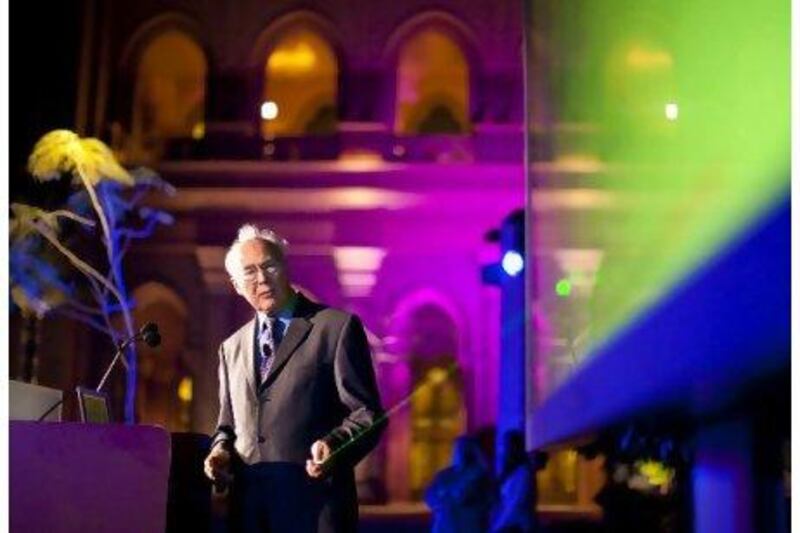ABU DHABI // A pioner of stem cell research has commended the UAE on its efforts to use advanced genetic engineering to breed the endangered houbara bustard.
Professor Sir Martin Evans, co-recipient of the Nobel Prize for medicine in 2007, also said the country should consider pitching in to related research being conducted elsewhere on curing disease in humans.
Prof Evans was in the capital on Thursday night to speak at the First International Symposium on Conservation and Propagation of Endangered Species of Birds. The conference was organised by the Department of the President's Affairs and attracted leading scientists from around the world.
He said Abu Dhabi, with its resources, is well-equipped to pitch in to research efforts that are expensive and need long-term support.
"Maybe you are able to take a long view," he said. "I would very much hope that some of the exciting future ideas for stem cell research will see development in Abu Dhabi and other places like this."
Although Prof Evans no longer does laboratory work, he has felt inspired to get involved again by colleagues who are applying the ideas he first tested in mice nearly 30 years ago.
"In many ways, it is partly taking me back to my work and partly déjà vu," he said. "You feel there is some aspect of it you like to see and try. It is very interesting."
Prof Evans praised local efforts to produce houbara bustards by using chimeric birds, chickens into which houbara sexual cells were injected before they hatched. The chimeric birds, which look like chickens, can when mated produce houbara sexual cells, and then be used to mate with a houbara bustard.
Scientists at the Central Veterinary Research Laboratory in Dubai and the Management of Nature Conservation, which falls under the Department of the President's Affairs in Abu Dhabi, are working on separate projects to breed the bird, which faces extinction due to over-hunting.
It was work by Prof Evans that paved the way 11 years ago for the cloning of Dolly the sheep, the first mammal to develop from an adult cell. Prof Evans had shown that stem cells can be isolated from a mouse embryo and grown in culture, in work that like the houbara research involved chimeric embryos.
Stem cells can transform into the many types of cells needed by the body to function, and Prof Evans said he realised "quite early on" that his research had wide implications for genetics research.
However, he attributed the idea that stem cells can be used to treat human disease to James Thomson, the American biologist who was first able to obtain stem cells from a human embryo and grow them.
"I don't think at the time I saw the opportunities for human stem cell treatment," said Prof Evans. "However James Thomson in his first paper had the concept that maybe they could be used in medicine."
The idea has evolved and scientists are working on ways to use stem cells to treat an assortment of conditions including heart disease, spinal injuries and diabetes.
Some treatments involving stem cells "are going to come in the next few years and some of them are going to be many years off", Prof Evans said.
"I am 70 years old now," he said. "I don't think I or my children are likely to benefit. I do think my grandchildren are. I think it might take that long."






